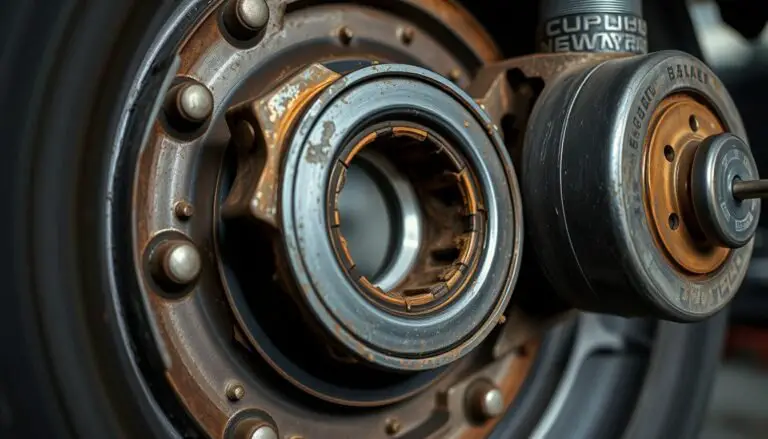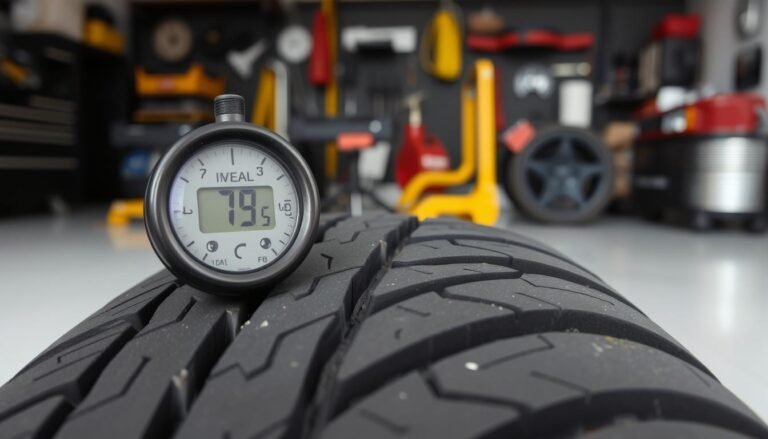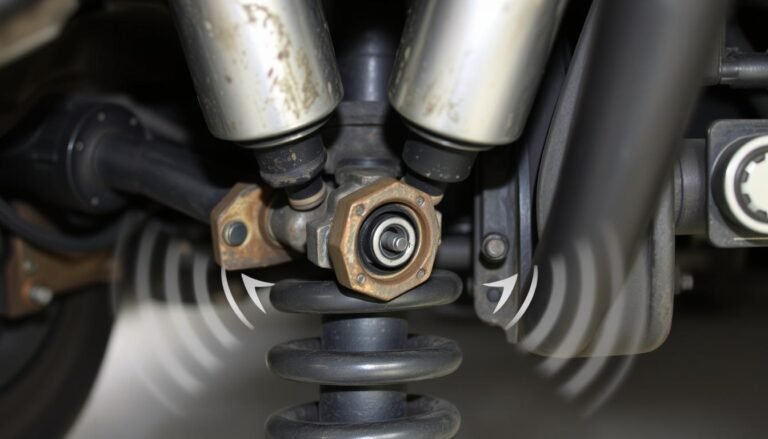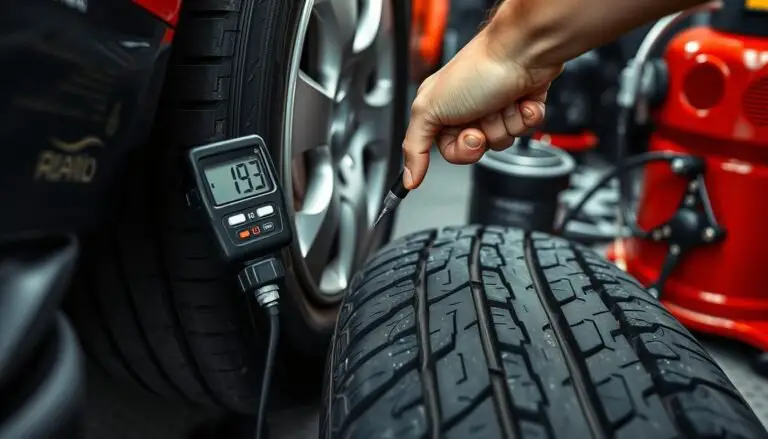How often should I have my Wheels Aligned?
Keeping your wheels aligned is key for your car’s best performance and tire life. How often you need to align your wheels depends on your driving, the roads you’re on, and your car’s age and condition. Knowing the importance of alignment helps your car run better and your tires last longer.
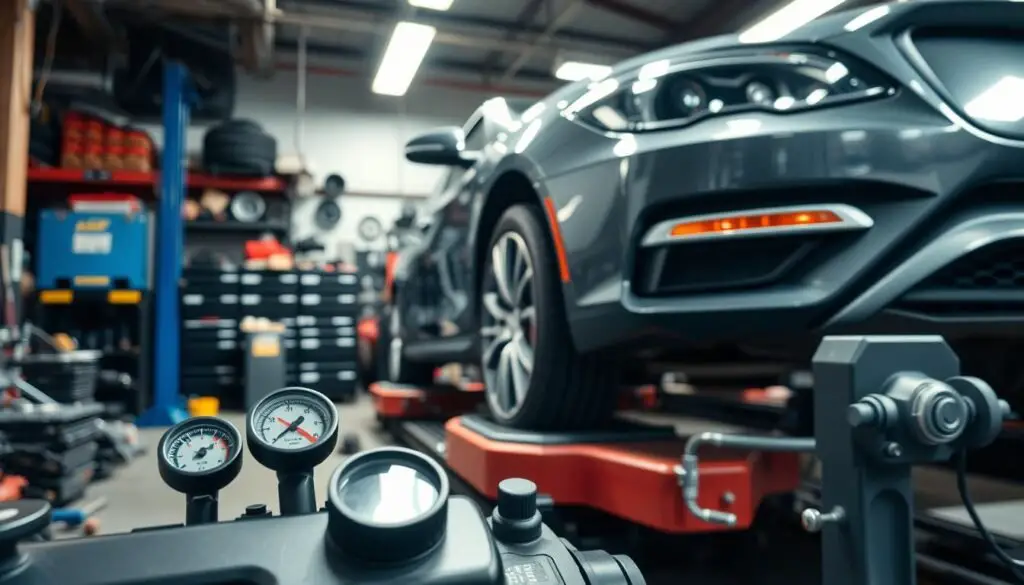
Key Takeaways
- Proper wheel alignment is essential for maintaining optimal vehicle performance and extending tire life.
- The recommended frequency for wheel alignment can vary based on driving conditions, vehicle age, and manufacturer recommendations.
- Misaligned wheels can lead to uneven tire wear, decreased fuel efficiency, and a decline in vehicle handling and safety.
- Regular wheel alignment checks and adjustments can help prevent costly tire replacements and other repairs down the line.
- Aligning your wheels as part of your regular car maintenance schedule is important for maintaining the overall health and longevity of your vehicle.
Wheel Alignment Frequency
Keeping your wheels aligned is key for your car’s health and performance. How often you need to align your wheels depends on your car’s age, driving conditions, and how you drive.
Factors Affecting Alignment Intervals
It’s wise to align your wheels every 6 to 12 months or when you see signs of misalignment. Several things can change how often you need to align your wheels, including:
- Driving on rough or uneven roads
- Hitting potholes or curbs
- Towing a trailer or hauling heavy loads
- Modifications to your vehicle’s suspension or tires
Signs of Misalignment
Watch out for signs your wheels might be misaligned, like:
- Uneven or rapid tire wear
- The vehicle pulling to one side while driving
- Steering wheel vibration or off-center positioning
- Increased fuel consumption
If you see any of these signs, get your wheel alignment checked by a pro right away. This ensures your car runs well and safely.
| Alignment Interval | Recommended Frequency |
|---|---|
| Typical Driving Conditions | Every 6-12 months |
| Rough or Uneven Roads | Every 4-6 months |
| Towing or Hauling Heavy Loads | Every 3-6 months |
| Vehicle Modifications | Immediately after changes |
Regular wheel alignment keeps your car running smoothly, saves fuel, and extends tire life. It makes driving safer and more enjoyable.
How often should I have my wheels aligned?
Keeping your wheels aligned is key for your car’s health and performance. Most car makers say to align your wheels every 6 to 12 months. But, how often you need it can depend on a few things.
The age and state of your car matter a lot. Older cars or those with lots of miles might need more frequent checks. Also, how you drive and the roads you’re on can affect when you need an alignment.
If your car starts pulling to one side or your tires wear unevenly, get it checked right away. Not doing so can cause more damage and cost you more in the long run.
To keep your car running well and safely, follow the wheel alignment frequency your car maker suggests. This is part of your car maintenance schedule. Regular alignments can help your tires and other parts last longer.
| Alignment Frequency | Recommended Intervals |
|---|---|
| Manufacturer Recommendation | Every 6 to 12 months |
| Vehicle Age and Condition | Older cars or higher mileage may need more frequent alignments |
| Driving Habits and Roads | Frequent alignment adjustments may be necessary for challenging driving conditions |
| Signs of Misalignment | Uneven tire wear, steering wheel pulling, or changes in handling |
Being proactive with your wheel alignment frequency and following your car’s car maintenance schedule helps keep it running great. This ensures your car stays safe and performs well on the road.
Importance of Proper Wheel Alignment
Keeping your wheels aligned is key for your car’s performance and life. When your wheels are aligned right, you get many benefits. These go beyond just feeling comfortable while driving.
Improved Fuel Efficiency
Proper wheel alignment helps your car use less fuel. If your wheels are off, your car works harder to move. This means your engine uses more fuel. By aligning your wheels, you cut down on this extra effort and save on gas.
Prolonged Tire Life
Worn-out tires often come from misaligned wheels. When wheels aren’t aligned, tires wear down faster in some spots. This means you’ll need to replace them sooner. But, with aligned wheels, tires wear evenly, lasting longer and saving you money.
| Benefit | Proper Wheel Alignment | Misaligned Wheels |
|---|---|---|
| Fuel Efficiency | Improved | Reduced |
| Tire Life | Prolonged | Accelerated Wear |
| Vehicle Handling | Enhanced | Compromised |
Regular wheel alignments improve your car’s performance. They help prevent tire wear and enhance handling. This approach to car care saves you money and makes driving safer and more enjoyable.
Vehicle Handling Improvement
Proper wheel alignment is key for better vehicle handling and performance. It ensures your car goes straight and handles well when steering. This makes driving safer and more enjoyable.
Wheels that are not aligned right can mess up your car’s handling. This can lead to many problems while driving. Keeping your wheels aligned is vital for your car to handle well and respond quickly to steering.
- Improved responsiveness: Correctly aligned wheels allow your vehicle to respond more quickly and accurately to your steering input, making it easier to navigate turns and maintain control.
- Enhanced stability: Proper wheel alignment helps your car stay stable and balanced, even at higher speeds or during sudden maneuvers.
- Reduced wandering: Misaligned wheels can cause your car to “wander” or drift from its intended path, making it more difficult to keep the vehicle centered in the lane.
Regularly checking your vehicle’s wheel alignment is important. It makes your car handle better and more confidently. This leads to a safer and more fun driving experience.
| Wheel Alignment Benefits | Improved Vehicle Handling |
|---|---|
| Responsiveness | Quicker and more accurate steering response |
| Stability | Enhanced balance and control at high speeds |
| Reduced Wandering | Improved lane-keeping and reduced drifting |
By focusing on proper wheel alignment, you can make your vehicle handle its best. Enjoy a more engaging and responsive driving experience.

Alignment Adjustment Intervals
Proper wheel alignment is key for your vehicle’s best performance and life span. But, how often should you align your wheels? The answer is in your vehicle’s manufacturer guidelines.
Manufacturer Recommendations
Most car makers say to align your wheels every 6 to 12 months. Or, when you notice your car handles differently or your tires wear out faster. It’s vital to follow your car’s manufacturer advice. Their guidelines are made for your car’s specific design and use.
For example, some cars need more frequent alignment checks if you drive off-road or in high-performance modes. Keeping up with your car’s maintenance and following the manufacturer’s service advice is the smart way. This ensures your wheels stay aligned as needed.
| Vehicle Manufacturer | Recommended Alignment Interval |
|---|---|
| Toyota | Every 6 months or 6,000 miles |
| Honda | Every 12 months or 12,000 miles |
| Ford | Every 6 months or 6,000 miles |
| Chevrolet | Every 12 months or 12,000 miles |
Remember, sticking to your car’s manufacturer recommendations for alignment is crucial. It keeps your vehicle’s wheels aligned and your tires even. This boosts performance and safety on the road.
Tire Wear Prevention
Proper wheel alignment is key to avoiding uneven tire wear. This can greatly reduce your tires’ lifespan. Misaligned wheels cause tires to wear down faster, leading to higher maintenance costs and more frequent replacements.
Aligning your wheels right not only prevents tire wear. It also boosts your vehicle’s handling and performance. Regular checks and adjustments keep your tires in top shape, extending their life.
The Importance of Proper Wheel Alignment
Proper wheel alignment is vital for many reasons:
- It keeps tire tread even, avoiding early tire replacement.
- It boosts fuel efficiency by lowering rolling resistance and engine work.
- It makes your vehicle handle better and stay stable, making driving safer and more comfortable.
By focusing on proper wheel alignment, you can make your tires last longer. This saves you money on expensive replacements later on.
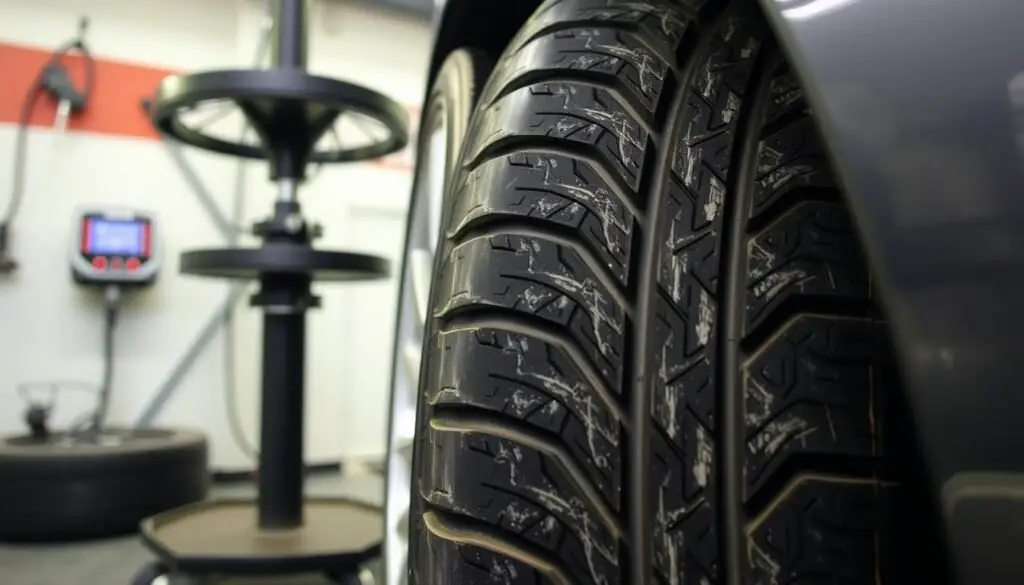
“Regular wheel alignment checks and adjustments are a small investment that can pay big dividends in terms of tire life and overall vehicle performance.”
Keeping up with your vehicle’s wheel alignment needs is a smart move. It’s a simple way to keep your tires healthy and long-lasting. By doing this, you get a smoother, safer, and more affordable drive.
Automotive Service Recommendations
It’s key to have your car serviced by skilled technicians to keep your wheels aligned. They have the right tools and know-how to fix any alignment problems. This keeps your car running smoothly and your tires lasting longer.
Professional Alignment Services
Getting regular wheel alignment checks is vital. Certified service providers use advanced tools to check your wheels’ angles. They make adjustments as needed to keep your car stable and your tires even.
| Service | Frequency | Benefits |
|---|---|---|
| Wheel Alignment | Every 12,000 miles or annually | Improved fuel efficiency Prolonged tire life Enhanced vehicle handling and stability |
Letting professionals handle your car’s alignment ensures it runs well. It also helps your tires last longer and saves you from expensive repairs later.
“Proper wheel alignment is essential for the overall health and performance of your vehicle. Regular professional services can make a significant difference in your driving experience and the lifespan of your tires.”
Car Maintenance Schedule
Keeping your car in top shape is key for safe and smooth driving. Wheel alignment is a must for this. It prevents tire wear, boosts fuel efficiency, and improves handling.
Aligning with Other Services
Experts say align your wheels with tire rotations or replacements. Also, do it during oil changes or tune-ups. This keeps your wheels aligned as your car wears out.
Aligning every 6,000 to 12,000 miles or with tire rotations is good. This extends tire life and improves your car’s performance.
Regular wheel alignments are part of a good car maintenance schedule. They make driving safer, more reliable, and cheaper. Proper maintenance now saves you from expensive repairs later.
Identifying Misalignment Issues
Proper wheel alignment is key for your vehicle’s best performance and safety. But spotting misalignment signs can be tricky. Knowing these signs helps you fix problems early.
Uneven tire wear is a common sign of misalignment. If your tires wear down unevenly, it means your wheels might be out of alignment. This can shorten your tire’s life and pose safety risks.
- Uneven tire wear
- Vehicle pulling to one side
- Off-center steering wheel
- Vibration or shaking in the steering wheel
Another sign is if your car pulls to one side while driving. This makes steering hard and can be dangerous. Also, if your steering wheel isn’t straight when driving straight, your wheels are misaligned.
Lastly, a vibrating or shaking steering wheel might mean your wheels are out of alignment. This could be due to uneven tire wear or unbalanced wheels.
Fixing these signs quickly is vital for your vehicle’s proper wheel alignment importance. Ignoring them can cause more problems later.
Knowing the signs of wheel misalignment lets you act fast. Regular wheel alignment checks are essential for your vehicle’s upkeep.
Consequences of Neglecting Alignment
Not keeping your wheels aligned can harm your car’s performance and safety. Misaligned wheels can make your car harder to control. This raises the risk of accidents, especially at high speeds or when making quick turns.
Safety Risks
Out-of-alignment wheels can make your car pull to one side. This makes it tough to stay on course and react to road changes. It puts you and others at risk because steering and control become harder.
Increased Repair Costs
Ignoring wheel alignment also means more repair bills down the road. Misaligned wheels wear out tires faster. This means you’ll have to replace tires more often, adding to the cost of owning a car. It also affects your car’s grip and handling, making it less safe.


